Social interaction skills
A young infant participates with a caregiver in responsive interactions focused on pictures of farm animals.



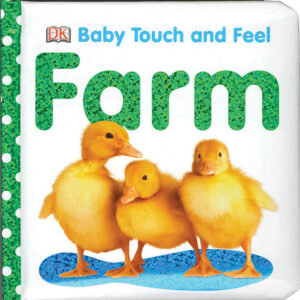 [Sit with the young infant reclined in your lap for talking about pictures in a book. Support the infant’s head in the bend of your arm so your hands can manage the book while also securely holding the infant.
[Sit with the young infant reclined in your lap for talking about pictures in a book. Support the infant’s head in the bend of your arm so your hands can manage the book while also securely holding the infant.
Smile and begin talking with the infant. Example: “Hi, Caleb! You woke up and had your bottle. Let’s talk about some pictures of animals now.”
Hold the book about 12 inches from the infant and point to the picture on the cover.]
Look at the ducklings on the cover of our book. The ducklings live on a farm.
[Pause for the infant to respond to your attention. Acknowledge the response. Example: “You are looking at me and smiling, Deja. I can hear you talking! You are saying ‘Ba-ba-ba’.”]
[Use the following strategies to promote interactions with the infant:
[Briefly describe the exchange. Example: “We talked about pictures of farm animals. We looked at the picture of the sheepdog for a long time, Deja. We had fun looking at the picture of the yellow chick!”]
Social interaction skills
An older infant engages with a caregiver in play using farm animal figures.



Be Prepared: This activity is for an infant who can sit independently or with support. Use fewer or more animal figures if you anticipate the suggested 3–5 figures might be too many or too few for the infant. A possible source of farm animal figures is the Fisher-Price® Little People Farm Animal Friends. Place the animal figures in the basket.
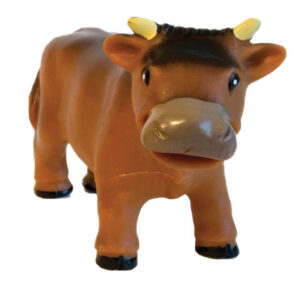
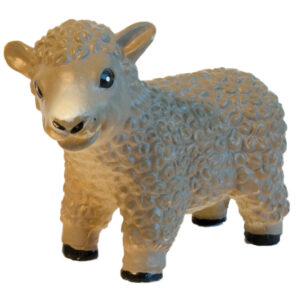
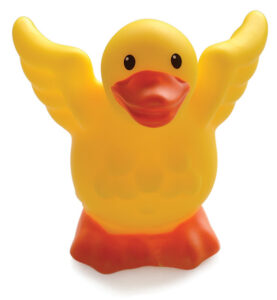 Invite an infant to join you to play with farm animals. Sit across from the infant. Introduce the basket and invite the infant to look at what is inside the basket. Use the following to promote responsive play interactions with the infant:
Invite an infant to join you to play with farm animals. Sit across from the infant. Introduce the basket and invite the infant to look at what is inside the basket. Use the following to promote responsive play interactions with the infant:
Your main task in each of these activity options is to watch the infant’s responses to a picture (Option 1) or play material (Option 2) to determine how best to support the infant’s interests. Observing carefully is essential to engaging in responsive interactions. Your interactions with the infant are the content of each activity. The pictures and materials are tools to facilitate interactions. The activities are not intended to teach about farm animals, although it is certainly appropriate to use an animal-like behavior, such as a pig’s oink oink, to promote a playful exchange.
Look for natural places to pause in your talk. This gives space for the infant to contribute to the exchange. It also promotes a back-and-forth pattern that is common in responsive interactions. The infant’s responses are likely to be nonverbal. Pause even if the infant does not respond.
Extra support
Enrichment
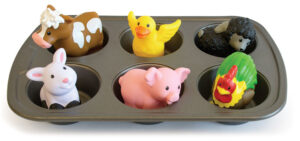 Infants in Option 2 who are mostly interested in putting the animals in the basket and then taking them out may enjoy doing the same with a muffin pan. Invite the infant to place an animal figure in each cup of the muffin pan.
Infants in Option 2 who are mostly interested in putting the animals in the basket and then taking them out may enjoy doing the same with a muffin pan. Invite the infant to place an animal figure in each cup of the muffin pan.Materials Needed: several books about farm animals, age-appropriate farm animal toys and figures, several baskets
Be Prepared: Create an area for infants to explore farm animals. Place the books close to baskets of animal toys and figures.
Provide opportunities for infants to look at pictures of farm animals in the books and to explore the farm animal toys and figures. Some infants may want to explore the animals’ characteristics, whereas others may delight in dumping and filling. Talk with infants about their actions with the toys. Recognize all forms of interaction with the books and animals.
Materials Needed: two toy barns (cardboard boxes can be used in place of a barn if needed), farm animal figures appropriate for toddlers and preschool-age children, related play materials—such as fabric/felt pieces, people figures, tractors/trucks, or blocks
Consider creating two farm animal play areas, one for older infants and toddlers, and one for preschool-age children.
Pretend play with animal figures on a farm can be enjoyed by children of all ages. Provide frequent opportunities for children to engage in the open-ended play with animal and people figures. Adding new and interesting materials, such as fabric, can enhance children’s play.